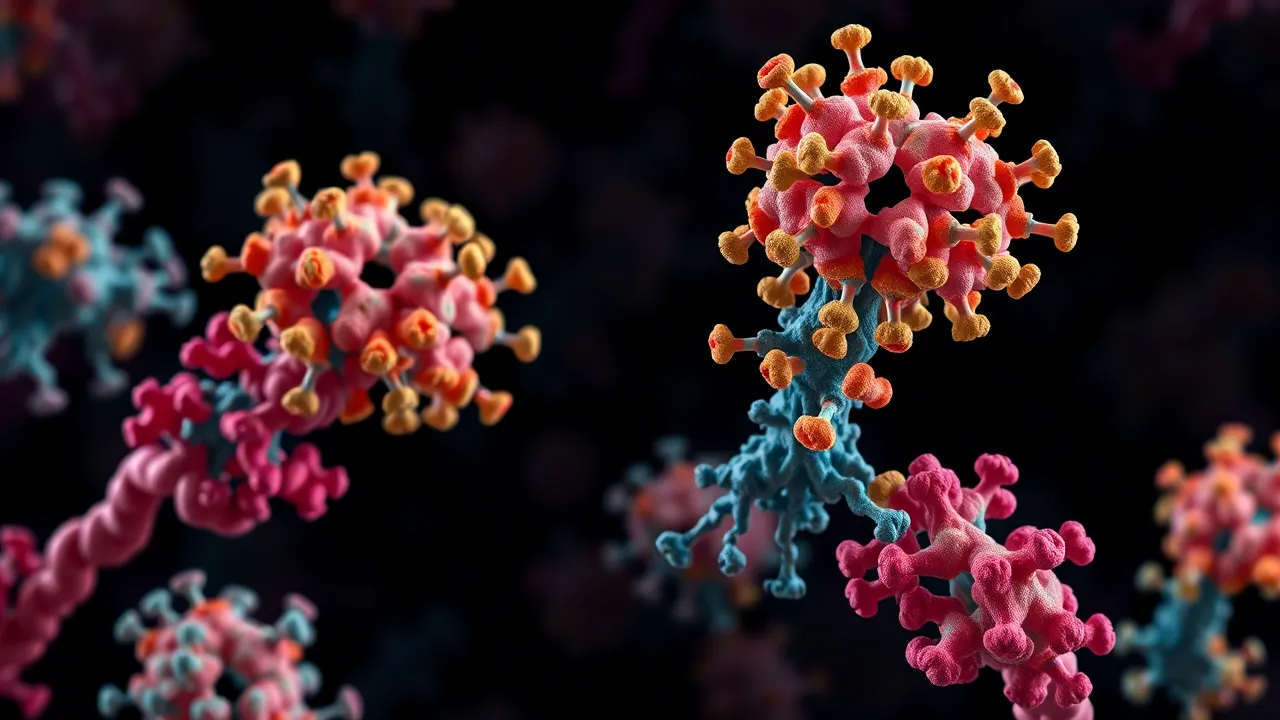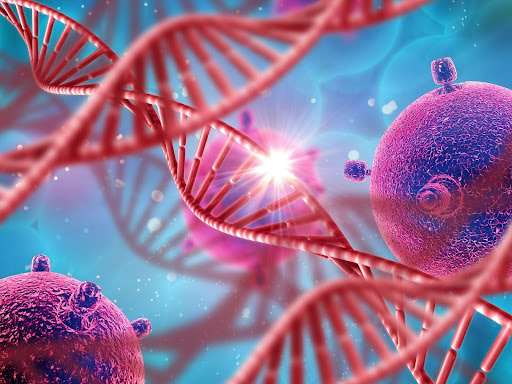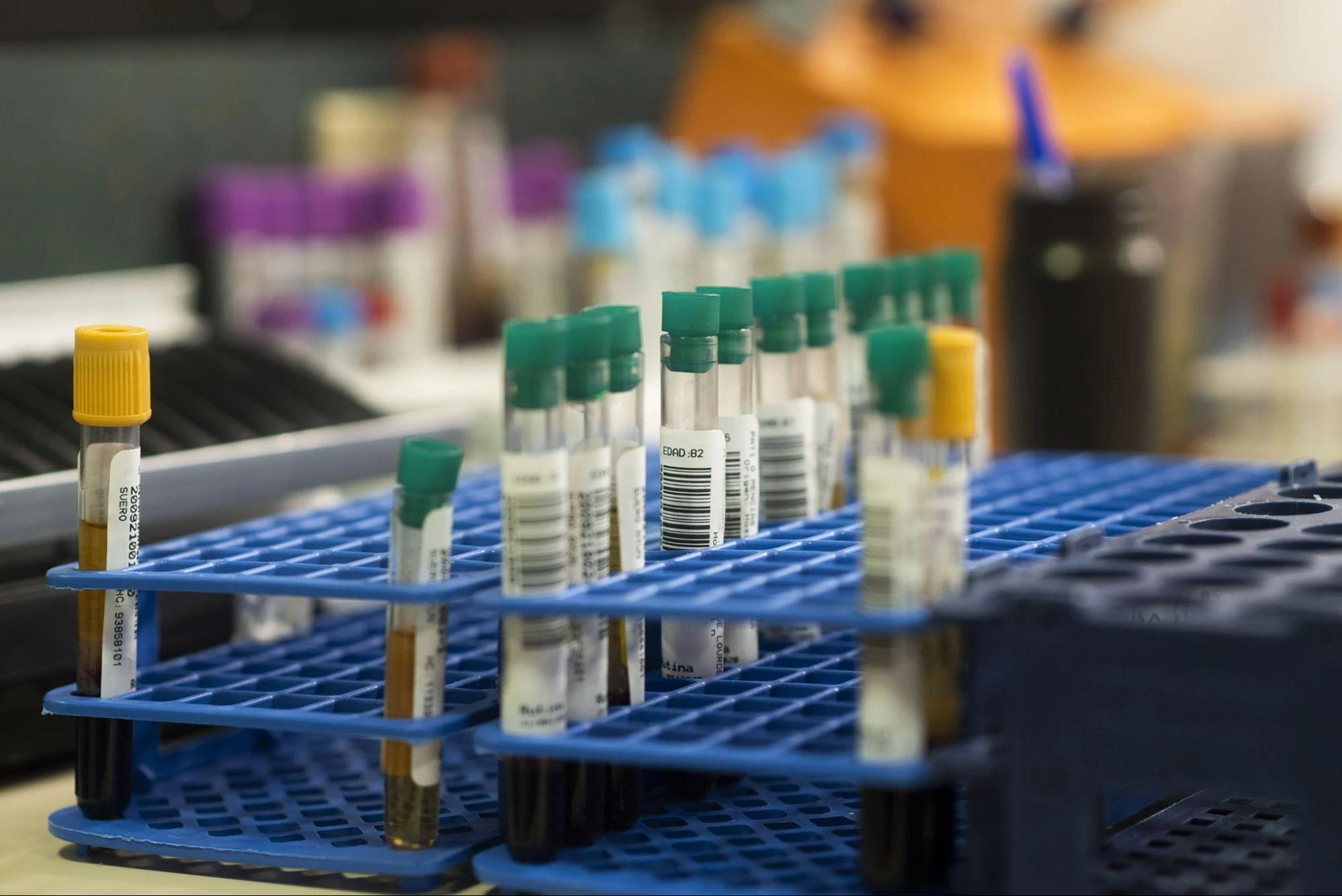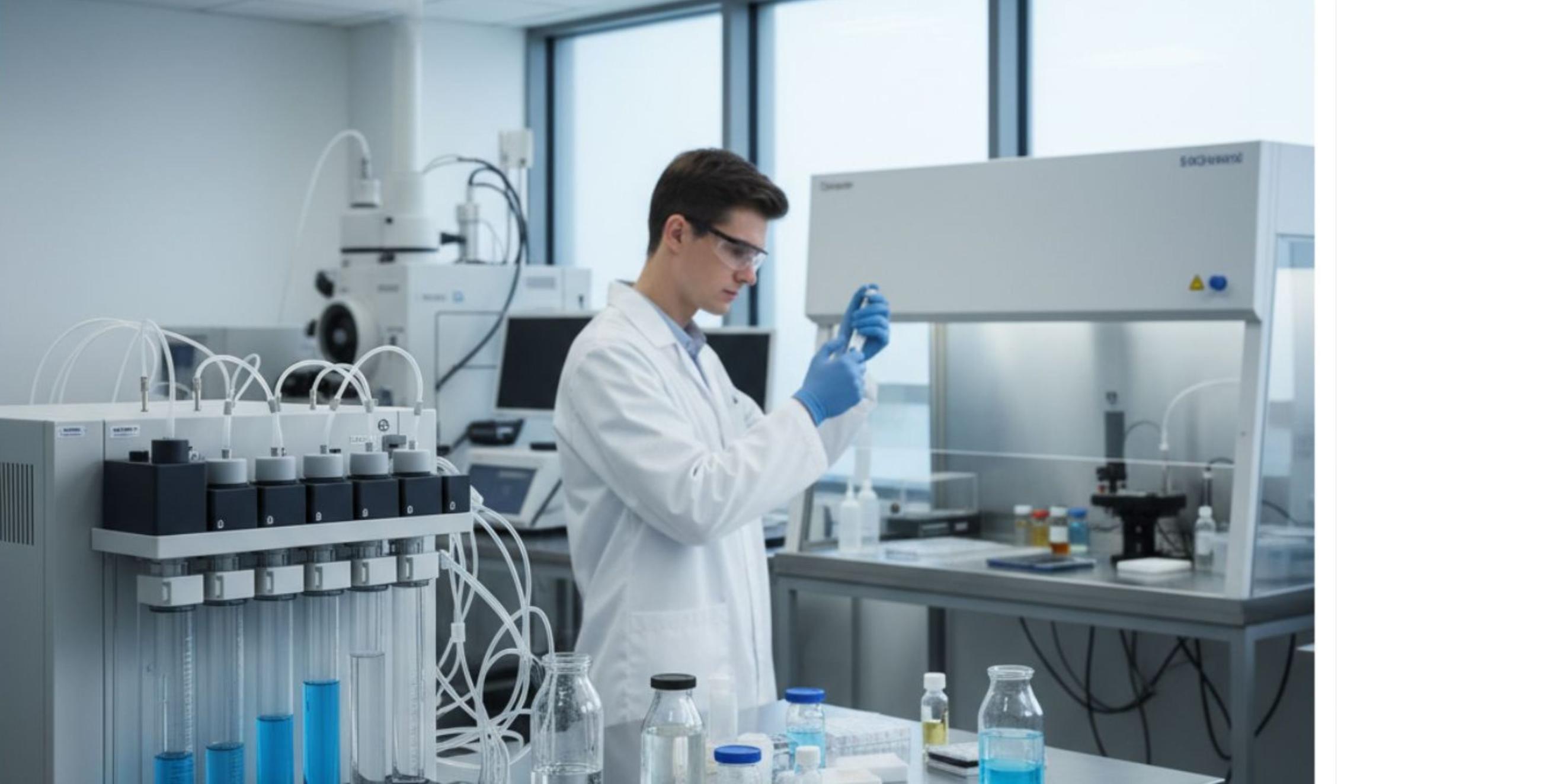Role of Activated Protein Kinases in Biomedical Research
In this Article
All of the products listed in AAA Biotech’s catalog are strictly for research-use only (RUO).

Protein kinases play a critical role in cell communication. They serve as molecular “switches”, primarily by donating phosphate groups to particular proteins in order to control an enormous variety of biological reactions.
The exact duties of the activated protein kinases have been a matter of great focus within the scientific community, especially due to their underlying role as an indispensable part of cellular signaling, metabolism, growth, and disease processes, such as cancer.
Read further, and we can help guide you through the role of protein kinases, how they are activated, and notable kinase pathways (most importantly, the mitogen-activated protein kinase, MAPK, pathway), and their significance in healthy conditions.
Key Information
- Activated protein kinases regulate cellular signaling by phosphorylating target proteins, which effectively controls growth, metabolism, and stress responses.
- Protein kinase cascades, like the MAPK pathway, amplify signals and
coordinate complex cellular functions.
- Different types of protein kinases (serine/threonine, tyrosine, dual-specificity) serve distinct biological roles.
- Activation of protein kinases involves phosphorylation, cofactors, second messengers, or metabolic stress signals.
- Dysregulated kinase activity is linked to diseases such as cancer, inflammation, metabolic disorders, and neurodegenerative disorders.
- Protein kinases are intensely investigated biomedical research targets, with many kinase inhibitors being developed as and used as therapeutic agents.
What is the Role of Activated Protein Kinases?
Protein kinases inhabit their roles at prominent regulatory points within the cell and correspondingly regulate the flow of the signal and its strengthening. They alter the properties of target proteins that they affect via phosphorylation, causing modification of protein functions, localization, or interaction activity.
Such phosphorylation may either switch “on” or switch “off” important cellular cascades, so cells can rapidly respond to various stimuli, such as a specific growth factor, a specific stress pathogen, or specific changes in metabolic activity.
In discussing the question, what is the role of activated protein kinases, it would be prudent to note that these molecules play a pivotal role in the coordination of the cell’s dynamic response to the surrounding environment.
Protein Kinase Function
Protein kinases are enzymes that catalyze the addition of phosphate groups to proteins. ATP is usually used as the source of phosphate, and said phosphate group is given to serine residues and threonine residues of the target protein, but also sometimes to tyrosine residues.
Phosphorylation (adding a phosphate group to a protein) is one of the most potent and useful post-translational modifications carried out by eukaryotic cells. Some functions of these proteins includes:
- Signal transduction - which is the transference of signals from an extracellular medium to a signal executed within the cell itself.
- Regulation of gene expression.
- Coordination of the cell cycle.
- Controlling cell growth, differentiation, and apoptosis.
- Regulation of metabolic and immune Systems.
How Protein Kinases Operate?
Protein kinases play the key regulatory role, creating interlinked networks known as protein kinase cascades. But what do they actually do at their core?
Concisely, they process both external and internal signals, e.g., hormones, growth factors, stress, or changes of energy, and translate them into messages and directions that the cell’s internal structure and mechanisms can understand, and subsequently carry out – these signals that are received by the cell are primarily to direct the cell to perform some process in order to maintain homeostasis.
Major Processes that are regulated by Protein Kinases:
- Instigating cellular division and proliferation
- Control of programmed cell death and apoptosis
- Adaptation to damage during DNA and cell stress
- Immunomodulation
- Modifying metabolic pathways (e.g., AMP-activated protein kinase)
Types of Protein Kinases
There are several types, and they are classified based on the residue they phosphorylate.
| Kinase Type | Substrate Residue | Examples | Role/Pathway |
|---|---|---|---|
| Serine/Threonine Protein Kinases | Serine/Threonine | Protein kinase A, MAPK, Protein kinase C | Cell cycle, growth, metabolism |
| Tyrosine Protein Kinases | Tyrosine | Epidermal growth factor receptor (EGFR), Src | Growth signaling, cancer, and immune regulation |
| Dual-Specificity Protein Kinases | Serine/Threonine/Tyr | MEK (MAPKK) | MAPK pathway |
| Histidine-Specific Protein Kinases | Histidine | Histidine kinases (mainly in prokaryotes) | Environmental sensing in bacteria |
| Aspartic/Glutamic Acid-Specific | Asp/Glu | Fewer examples, specialized signaling | Specialized cellular signals |
Functions of the Kinase Enzyme
The implicit role of the kinase enzyme and its action is the process of
phosphorylation that is essential to cell regulation. This involves:
- Identification of substrate proteins by means of consensus motifs.
- Application of ATP as a phosphate donor.
- The movement of the terminal phosphate to the substrate.
- Reconformations of substrates, their performance, stability, or
interactions.
 Step
MAPK Cascade Component
Activation Mechanism
Downstream Effect
1
MAPK kinase kinase
Signal (e.g., growth factor)
Phosphorylates MAPK kinase
2
MAPK kinase
Phosphorylated by MAPK kinase kinase
Phosphorylates MAPK
3
MAPK
Phosphorylated by MAPK kinase
Activates transcription factors, etc.
Step
MAPK Cascade Component
Activation Mechanism
Downstream Effect
1
MAPK kinase kinase
Signal (e.g., growth factor)
Phosphorylates MAPK kinase
2
MAPK kinase
Phosphorylated by MAPK kinase kinase
Phosphorylates MAPK
3
MAPK
Phosphorylated by MAPK kinase
Activates transcription factors, etc.
Overview of Mitogen-Activated Protein Kinase (MAPK) Pathway
One of the most commonly researched protein kinase cascades is the MAPK pathway that is closely associated with cell growth, survival, and differentiation.
There are three essential modules in the MAPK pathway:
01. ERK (Extracellular signal-regulated kinases): Growth factors and mitogens primarily/robustly activate them.
02. JNK (c-Jun N-terminal kinases): Stress stimuli (UV, oxidative stress) activate JNK.
03. p38 MAPK: Reacts to inflammation and other cell stresses.
What Does Activation of the MAPK Pathway Require?
The process of activation begins with stimulation of a cell surface receptor by a mitogen or growth factor and binding of a small GTPase (e.g., Ras), which is activated as a result.
This causes the cascade-like activation of Raf (MAP3K), MEK (MAP2K), and then ERK (MAPK).
Stages of MAPK Pathway:
- Attachment of ligand to a receptor on the cell surface (e.g., RTK).
- Dimerization of receptor and autophosphorylation.
- Adaptor protein activation and Ras.
- Step-wise phosphorylation of Raf, MEK, and ERK.
- Phosphorylation of transcription factors by ERK translocates to the nucleus and modifies gene expression.
The Role of MAPK in Health & Disease
Health
- Controls the growth and division of cells.
- Regulates cellular responsiveness and cellular differentiation to outside signals.
- Stabilizes tissues.
Disease
- Cancer: Inappropriate pathway activation within the MAPK pathway can drive cancer-forming cells and encourage them to grow and survive with no control (as is witnessed in numerous tumors); thus, the pathway is a significant focus of anti-cancer treatment investigation.
- Inflammatory Diseases: Aberrant MAPK signaling may precipitate increasing inflammation and tissue destruction.
- Neurodegenerative Disorders: Pathological changes in MAPK can have incredibly significant consequences in neurodegenerative diseases such as Alzheimer's and Parkinson's.
Example: AMP-Activated Protein Kinase ( AMPK )
AMPK is a crosstalk regulator of cellular ATP energy availability. Its work is strictly connected to instances of low cellular energy. This can be during a muscle contraction or metabolic stress.
Activated AMPK then turns on catabolic pathways, producing ATP, and turns off anabolic pathways, using ATP to reinstate energy homeostasis within cells.
| AMPK Action | Cellular Context | Downstream Effects |
|---|---|---|
| Glucose uptake & fatty acid oxidation | Muscle during exercise | Increased ATP production, improved endurance |
| Inhibition of lipogenesis, gluconeogenesis | Liver during fasting | Maintains blood glucose and lipid balance |
Biomedical Research Interest
Cancer Therapeutics
Cancer-related protein kinases, Serine/threonine protein kinases (e.g., MAPKs), Tyrosine protein kinases (e.g., tyrosine kinases) - inhibitors of these such as imatinib (BCR-ABL in malignancy in CML) reflect the effectiveness of treating dysregulated kinases in malignancy.
Metabolic Disorders
The activity of AMPK and related kinases provides a real mechanism/pathway for investigation in the hopes of eventually treating metabolic diseases, obesity, and diabetes.
Inflammation and Immune Disorders
Targeting of the JNK and p38 kinase pathways provides possible targets for the development of therapeutic approaches to help with autoimmune and inflammatory disorders.
Protein Kinases: Table of Major Families and Functions
| Kinase Family | Example Members | Key Functions | Biomedical Applications |
|---|---|---|---|
| Serine/Threonine | PKA, PKC, CDKs, MAPKs | Cell cycle, metabolism, growth | Cancer, metabolic disorders |
| Tyrosine | Src, EGFR, Insulin Receptor | Signal transduction, growth, and immune function | Cancer, immunotherapy |
| Dual Specificity | MEK1/2 | MAPK pathway regulation | Cancer |
| Histidine | Sensor kinases (bacteria) | Environmental sensing, stress response | Antibiotic development |
Final Thoughts
Activated protein kinases are vital “conductors” of cellular life. They convert environmental and endogenous signals into highly modulated cellular responses, mediating phosphorylation processes, which span metabolism, cell division, stress adaptation, and immune system response.
Malregulation of these kinases highlights an enormous range of human disorders, that has directed a large shift in biomedical research toward investigation of the possibilities for development of small-molecule kinase inhibitors.
As research into these pathways and related areas progresses, the knowledge about protein kinase networks will increase, inevitably leading to new discoveries in modern science/medicine.
Frequently Asked Questions (FAQs)
01. What is the role of activated protein kinases in pathology?
Activated protein kinases will promote cellular proliferation, survival, or stress adaptation of the affected cells. Overactivation is implicated in many cancers, diabetes, neurodegeneration, and inflammation, making them both biomarkers and primary targets for drug design.
02. What is so special about protein kinase cascades?
Protein kinase cascades precisely transmit and amplify signals; filter noise, and permit multiple sites of regulation and integration. This allows the development of specific context-specific cellular responses that are essential in multicellular organisms.
03. Do the protein kinases exist in different forms to serve different purposes?
Yes, there exist quite a number of protein kinases of varying substrate-specificities and biological functions. All three types of kinases, serine/threonine kinases, tyrosine kinases, and dual-specificity kinases, have different lines of control of various features of cell biology as well as cell pathology.
04. Are protein kinases the targets of drugs/therapies?
Absolutely. One of the most “druggable” protein families is made up of protein kinases. A kinase inhibitor can be used as an anti-cancer treatment (and some treatments of other diseases); many anti-cancer agents are kinase inhibitors and target dysregulated kinase activity.
05. How does protein kinase activation get regulated?
Activation of protein kinases can be through phosphorylation, association/interaction with a second messenger, conformational change, or interaction with other proteins, as well as individual subunits.
References
01. Activation and Function of the MAPKs and Their Substrates, the MAPK-Activated Protein Kinases - https://pmc.ncbi.nlm.nih.gov/articles/PMC3063353/
02. Protein Kinases: An Overview - https://www.sciencedirect.com/topics/neuroscience/protein-kinases
03. AMP-activated protein kinase: Role in metabolism and therapeutic implications - https://pubmed.ncbi.nlm.nih.gov/17026483/
04. A critical evaluation of protein kinase regulation by activation loop autophosphorylation - https://pmc.ncbi.nlm.nih.gov/articles/PMC10359097/
05. Ten things you should know about protein kinases: IUPHAR Review 14 - https://pmc.ncbi.nlm.nih.gov/articles/PMC4439867/
06. MAPK Signaling Cascades - https://app.jove.com/es/science-education/v/13209/mapk-signaling-cascades?playlist=6713577
07. The Mitogen-Activated Protein Kinase (MAPK) Pathway: Role in Immune Evasion by Trypanosomatids - https://www.frontiersin.org/journals/microbiology/articles/10.3389/fmicb.2016.00183/full
08. Kinase Enzymes: Functions and Importance - https://proventainternational.com/kinase-enzymes-functions-and-importance/





